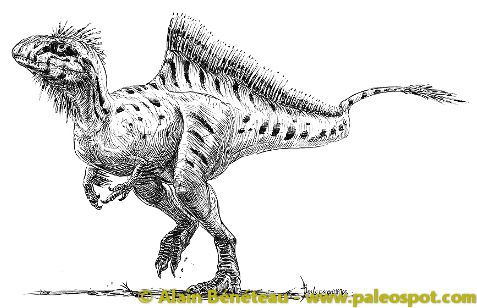-
 Geometric coordinates
Geometric coordinates
-
 Webcam
Webcam
-
 Iron-bearing formation
Iron-bearing formation
-
 Pyroclastic surge
Pyroclastic surge
-
 Floppy disk
Floppy disk
-
 Bituminous shale
Bituminous shale
-
 Akinesia
Akinesia
-
 Biotic crisis
Biotic crisis
-
 Gonadotrophins
Gonadotrophins
-
 Spandrel
Spandrel
-
 Earth Summit
Earth Summit
-
 Kademlia
Kademlia
-
 Progesterone
Progesterone
-
 Induction
Induction
-
 Endolymph
Endolymph
-
 Aliasing
Aliasing
-
 Terminator
Terminator
-
 Tibia
Tibia
-
 Sialidase
Sialidase
-
 Incretin modulators
Incretin modulators
-
 Wiki
Wiki
-
 Notonecta
Notonecta
-
 Genus
Genus
-
 Chalazion
Chalazion
-
 Aplasia
Aplasia
-
 EES
EES
-
 Podzol
Podzol
-
 Antiparticle
Antiparticle
-
 Antioxidants
Antioxidants
-
 Anti-fungal
Anti-fungal
Concavenator corcovatus
Concavenator is a dinosaur newly discovered in 2010 and to date is the oldest representative of the Carcharodontosauridae family. Discovered in Spain, it lived during the lower Cretaceous. It is of a relatively small size for this family (at least 5 metres) and has two singular characteristics: the presence of at least one hump on its back, as well as the presence of feathers on the forearm.
Its feathers evidently were not used for flight. They remind us once again that birds come from dinosaurs, and that the appearance of feathers is not linked to flight.
Despite the very good state of conservation of the Concavenator skeleton, we do not really know what its hump looked like; nor whether it had other appendages besides these feathers. The reconstruction of its appearance is therefore more hypothetical, giving a free reign to the imagination of paleoartists.
 Suggested reconstruction of the Concavenator. © Alain Bénéteau
Suggested reconstruction of the Concavenator. © Alain Bénéteau
Latest
Fill out my online form.



